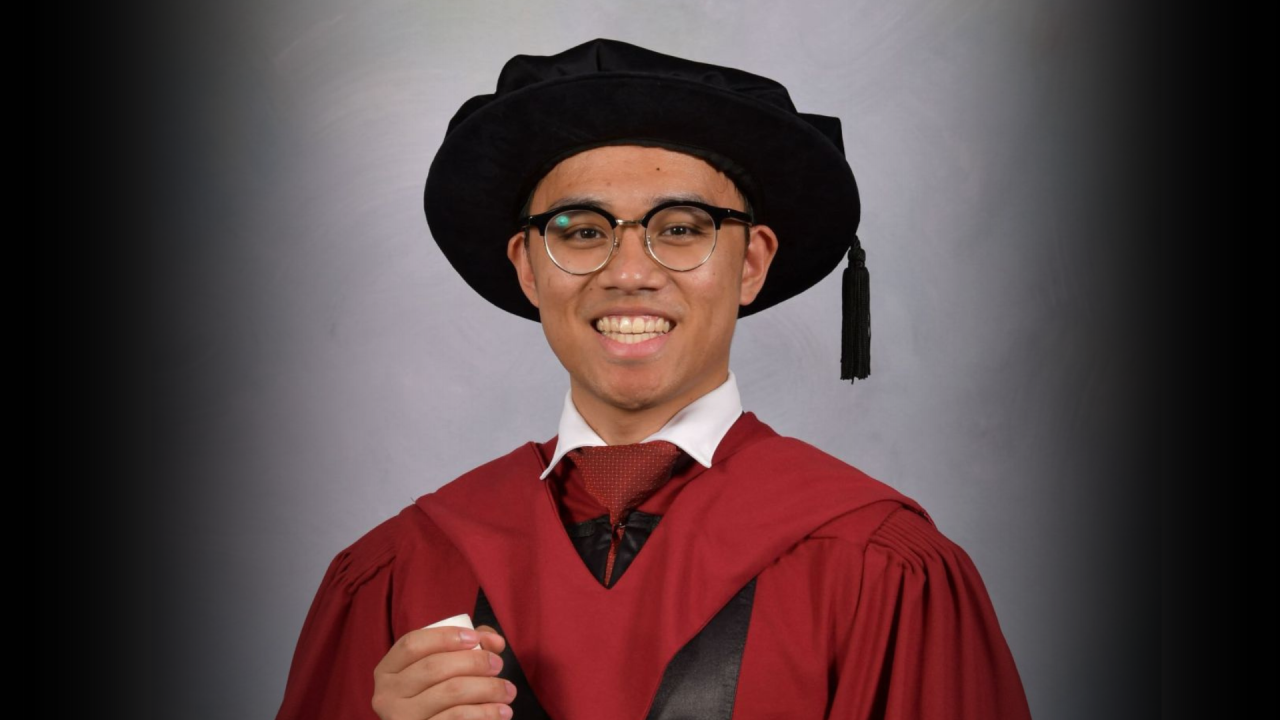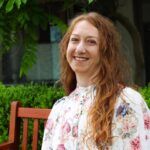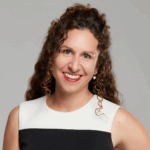Curtin PhD graduate and high performance coach, Dr Julian Ramos.
Meet Dr. Julian Ramos, a newly minted PhD graduate and high-performance coach. From his humble beginnings as a Curtin undergraduate student to earning a Bachelor of Science in Exercise, Sports, and Rehabilitation (First Class Honours), and last year completing his PhD in Exercise Sport and Rehabilitation at Curtin, Julian’s journey is a testament to perseverance and dedication.
Today, he is an Exercise Scientist at Kieser Australia in Melbourne, where he continues to push the boundaries of sports science.
Julian’s contributions to the field have already been recognised as last year he was honoured with the Young Investigator Award (Sports Science and Early Career Researcher Award) from leading governing body Exercise & Sports Science Australia (ESSA), further cementing his reputation as an innovator and leader in sports science.
In July 2023, Julian presented his pioneering PhD research on “Using Cooling to Enhance Endurance Performance in the Heat” in Paris at the European College of Sport Science conference marking his first conference and last year he presented at the ESSA Western Australia State Symposium.

We had the pleasure of speaking with Julian about his career so far, his insights into high-performance sports, and his invaluable advice for the next generation of professionals in the field.
What motivated you to pursue a career in exercise science and rehabilitation, and how have your studies at Curtin University prepared you for your career so far?
I’ve always been an active person and have loved sports. At the time, I thought it would be cool to one day exercise and understand how and why things happen in the body.
I always loved the practical component of the classes, and I believe most of the work I do now stems from the knowledge and experience I gained from them
How did the relationships you built during your time at Curtin help you in your career? Do you still maintain any of these connections today?
They’ve been incredibly helpful and have allowed me to experience or partake in projects I never thought I would do. I certainly keep in touch with almost everyone and aim to build many more connections as I progress in my career.
I’ve been lucky enough to connect with experts in various areas of research, high performance, and even clinical rehabilitation and I still consult my PhD supervisors Dr Carly Brade and Associate Professor Kagan Ducker about the research area as a whole.
As someone who has worked as a Head of High Performance, what are the most crucial aspects of optimising athlete performance, and how do you apply your research knowledge in a practical setting?
I’ve really learned that optimising athlete performance is not down to the tech and gadgets you use, it also requires buy-in from the club, team, and players themselves. My research knowledge has enabled me to be highly adaptable in a work setting.
Sure, there are gold-standard ways of doing things, but unfortunately, they aren’t always feasible in the field. Having the skills to dissect research allows me to find the next best solution for the situation at hand.
In your opinion, what are the emerging trends or advancements in the field of exercise science and rehabilitation, and how do you see the industry evolving in the next five to ten years?
I believe advancements in the industry will always revolve around new technologies being developed. Previously, sports tasks had to be simulated in a controlled lab environment for us to collect data. But now, more equipment is becoming portable, allowing us to collect data while athletes perform tasks they would usually do in their sport.
The next few Olympics are also set to be in hot environments so I think more research will look at how we can optimise how we already prepare athletes for the heat. It’s hard to predict where the industry will go, especially with so many sports played at an international level now. However, I hope the industry makes strides in addressing knowledge gaps regarding female and Paralympic athletes.
What advice would you give to students or graduates looking to work in high-performance sports or rehabilitation? Are there any skills or experiences that you believe are essential for success?
Look to create as many relationships as you can by attending workshops and/or special interest groups. Once you’ve made these relationships, try and pick everyone’s brain, it’s amazing and humbling to learn how one simple question can be answered in so many different ways.
In order to succeed in high-performance, I’ve found that the hunger for continuous learning and keeping up to date with trends in the field is key, as the field evolves so fast.
Julian’s journey is a testament to the power of education, adaptability, and strong professional relationships. If you’re looking to enter the world of high-performance sports or rehabilitation, his story is a great example of where passion and perseverance can take you.
Click here to learn more about the courses available in Exercise Science at Curtin.
–
Dr Julian Ramos, Exercise Scientist at Kieser Australia
An expert in exercise science and rehabilitation, Julian is currently an Exercise Scientist at Kieser Australia in Melbourne. He has an extensive background in high-performance coaching previously serving as the Strength & Conditioning Coach for the Warwick Senators National Basketball League-1 (NBL-1) West and Head of High Performance at Courtside Fitness.



